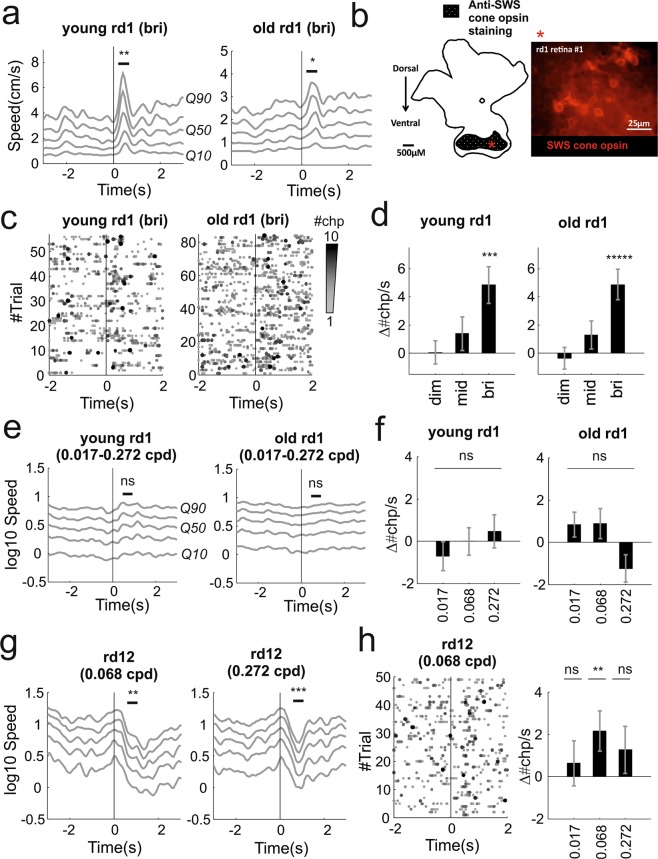Figure 4.
Behavioural responses to full field flashes and looming + gratings in mouse models of retinal degeneration. (a) Increase in speed after bright flash for young and old rd1 animals (respectively left and right panels). (b) Immunostaining of retinal wholemounts from “old” cohort of rd1 mice revealed presence of surviving S-cones in peripheral ventral regions. A diagram showing pattern of anti-SWS cone opsin staining in a representative rd1retina (left), with an example micrograph of the anti-SWS cone staining we observed in the ventral retina shown on the right. Asterisk indicates location of micrograph in diagram of the retina. An expanded version of this figure is shown in Supplementary Fig. 7. (c) Behavioural changepoint for individual trials under bright flash stimuli for “young” and “old” animals (respectively left and right panels; 56, 84 trials collected from 8, 12 animals; each animals recorded for 7 trials; visual stimulus at time 0). (d) Increase in changepoint rate (mean ± sem) as function of flash intensity. (e) Looming did not evoke changes in speed in both groups. Speed, represented in log scale, was averaged across the spatial frequencies tested (0.017, 0.068 and 0.272 cycles/degree). (f) Changepoint rates did not significantly change after stimulus onset at all spatial frequencies tested (0.017, 0.068, 0.272 cycles/deg; mean ± sem). (g) rd12 expressed significant reductions in movement at 0.068 cycles/deg (left panel) and at 0.272 cycles/deg (right panel). (h) Behavioural changepoints for individual trials during looming gratings at 0.068 cycles/deg reveals repeatable responses (left). Changepoint rates as function of spatial frequencies (right panel; mean ± sem). *p < 0.05, **p < 0.01, ***p < 0.005, ****p < 0.001, *****p < 0.0005, ******p < 0.0001, ns = not significant.

